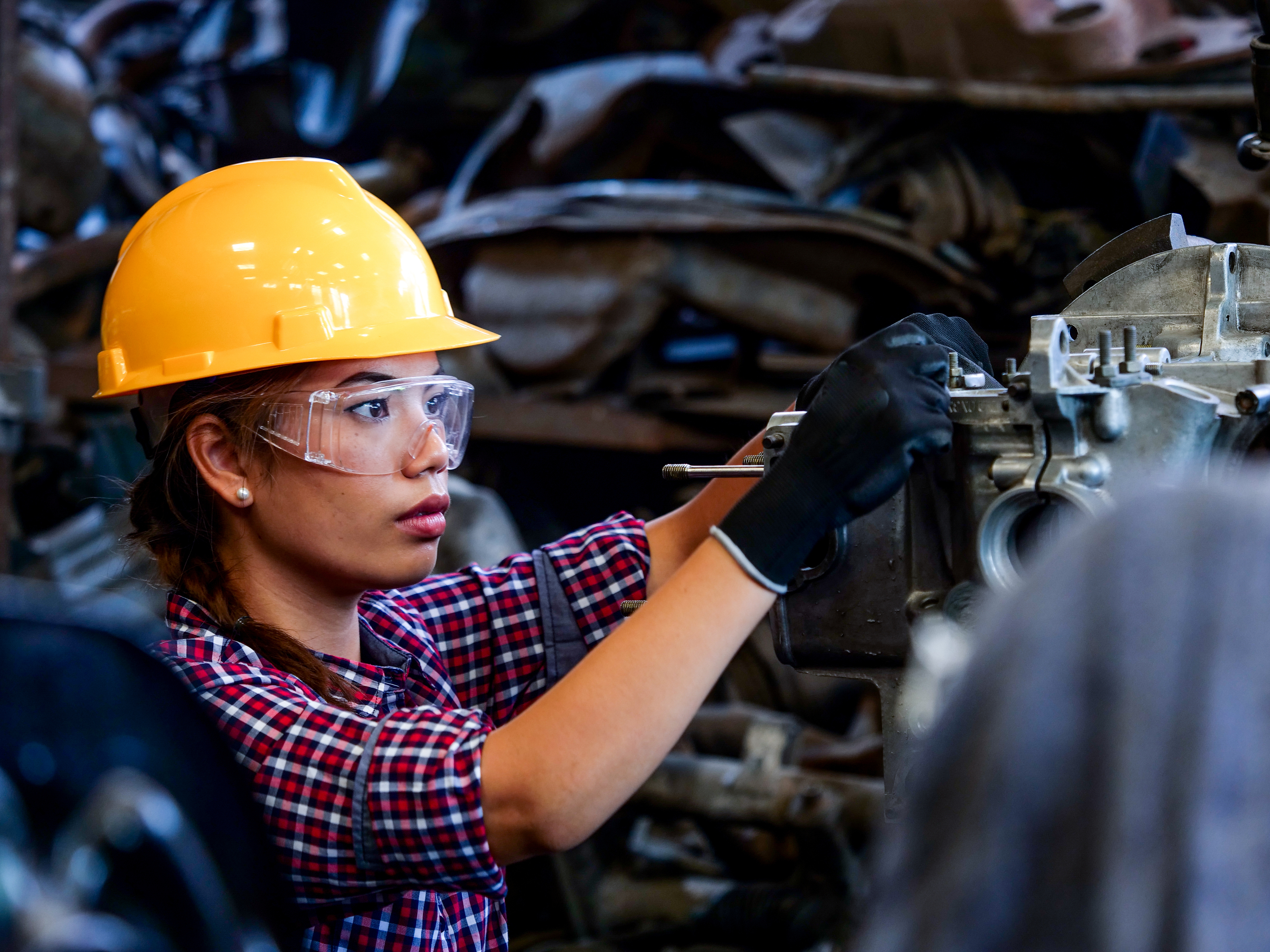Inflation Reduction Act Gives DOE an Opportunity to Protect Hardest Hit Communities
Addressing the climate crisis does not begin and end with carbon emissions. Workers and families across the country continue to face severe risks from exposure to toxic releases from carbon-intensive industrial sectors. If nothing changes, the country will rely more heavily on these same industries that will release more toxic pollution when delivering parts for wind turbines, transmission lines, and other pieces of infrastructure critical to building a less carbon-intensive economy. As a consequence, communities that have historically suffered from environmental injustice will continue to carry a disproportionate share of the social cost from climate change.
Given this challenge, the adoption of new industrial processes that can abate both climate pollution and toxic releases is essential. Fortunately, Congress has made billions of dollars available for investments in these transformative technologies through the Advanced Industrial Facilities Deployment Program created by the Inflation Reduction Act. Now, the decision rests with the Department of Energy (DOE) to spend this resource in a way that not only reverses climate change but also safeguards working families across the country.
The harm currently caused by industrial pollution is extensive. Particle pollution, produced significantly from industrial facilities, is one of the most devastating threats to public health. A recent study from Harvard School of Public Health estimated that particle pollution may be responsible for as many as 350,000 premature deaths in the United States annually.
These health consequences fall disproportionately on communities adjacent to these sources of pollution, especially Black and Brown families. Racial disparities in the impact of industrial pollution in the United States are well documented. The average exposure to industrial air toxins in a low-income Black community is 47 percent higher than that in a low-income white community. And families in low-income communities are overall more likely to be exposed to health risks related to industrial pollution than their more affluent peers.
The U.S. government recognizes that these vast disparities exist. The Inflation Reduction Act offers a series of resources, including $3 billion in block grants for community-led projects to address local pollution and the deployment of additional air monitoring devices. More explicitly, the White House established the goal of committing 40 percent of federal investments to “communities that are marginalized, underserved, and overburdened by pollution.”
However, the deployment of these resources faces practical challenges. Regarding the block grants, Kendall Dix, national policy director at the climate justice organization Taproot Earth, noted that the programs rely on community members “to have expertise and time and resources to [apply] for what can be really onerous paperwork burdens.”
These measures also do not address potential increases in industrial pollution from the country’s anticipated demand for industrial products, like steel, that are essential for the manufacturing of everything from sources of renewable energy to electrified modes of transportation.
Stopping the build-out of climate-friendly infrastructure would also not reduce harm, as Black, Brown, and Indigenous communities are more likely to suffer from intensifying extreme weather events that are happening as a consequence of climate change.
But these problems are not intractable. One solution is to accelerate the adoption of novel industrial technologies that promise to reduce both climate pollution and toxic releases. Many are currently in the pilot stage and require funding to prove that they can work at an industrial scale and become a reliable part of the supply chain.
This is where the Department of Energy’s $5.8 billion Advanced Industrial Facilities Deployment Program can have the greatest impact and complement other resources that were made available through the Inflation Reduction Act.
Examples of emerging technologies that could be transformational include direct reduction of iron using green hydrogen and molten oxide electrolysis, both of which promise to produce new steel without burning coking coal and releasing particle pollution in the process. Similar demonstrations in technologies that offer both climate and public health benefits promise to deliver the greatest benefits for the public wellbeing. Further focus on decarbonizing materials like steel that are used extensively by other industry actors (such as automakers, construction, etc.) accelerate the responsible transition of the supply chain.
There will undoubtedly be pressure on the Department of Energy to use all available funds to expand the production of components for energy-saving infrastructure. Those are important efforts. However, the country cannot afford to lose the opportunity to fund projects that promise to make industrial processes cleaner and safer for workers and communities that have long faced environmental injustice. Investments in new industrial processes also promise, with unionization, opportunities to employ more Americans with family-supporting wages by accelerating the development of future-facing technologies that will make American manufacturers more competitive.
Safeguarding families who are most threatened by the consequences of the climate crisis should be a top priority in any climate action.Therefore, transformative innovations in heavy industries are essential, and the resources that the public dedicates to this effort must keep environmental justice front of mind.
